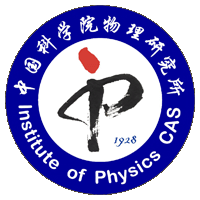The race is on to develop a commercial nuclear fusion reactor. Many companies worldwide are working on a variety of designs. Now a Chinese team claims that they have discovered an economical way to achieve nuclear fusion that could compete with much more expensive systems under development.
Researchers at the Chinese Academy of Sciences’ Institute of Physics began experiments into fusion power at the Shenguang II laser facility last summer. The Chinese government gave the team just one hundred and fifty six million dollars over six years to carry out their experiments. This is a paltry sum when compared to experimental fusion reactors such as the International Thermal Experimental Reactor (ITER) in France. This hung project has an estimated budget of forty five to sixty five million dollars.
Over this last summer, researchers at the National Ignition Facility (NIF) in the U.S. produced more fusion than any other experiment to date. That experiment involved aiming one hundred very powerful lasers at a single pellet of fuel. Unfortunately, the operation of the experiment rig eventually deformed the mirrors used to create the lasing effect and reduced their accuracy.
The Chinese team hopes to improve on the NIF results. Along with achieving fusion, they also have to figure out how to do it one a small budget and with much smaller lasers. Eventually, they drew inspiration from a process that was initially developed in 1997 by Zhang Jie, a well-known Chinese physicist.
The old process involved weaker laser beams aimed at two tiny gold cones. These cones emit hydrogen plasma at each other. When properly configured, this system can produce a fusion reaction. The gold cones vaporize after fusion. However, the ultimate cost will be extremely small in the operation of a future fusion power plant. Zhang Zhe is the lead researcher for the new Chinese experiments. He said that “A small grain of gold can make thousands of cones.”
The Chinese team did encounter some problems during their experiments. However, Zhang says that they were able to make considerable progress. He expressed the hope that the team will be able to scale their research with more sophisticated tools and facilities in the future that “will lift the game to a whole new level.” When that happens, the team might be able to develop a fusion reactor that will rival the capabilities of the ITER at a much smaller cost.
This is another exciting update in the race to develop a commercial fusion reactor. Such a reactor could provide boundless clean energy and help the world move away from fossil fuels. Many analysts say that fusion energy will probably not be developed by any one country but as the result of a collaboration of many nations.
An anonymous fusion scientist has said that “It is difficult to predict which approach or which country will win the race at this stage. There are too many uncertainties ahead. But in the end, different technologies, different nations may need to unite as one to bring fusion from dream to life.”
